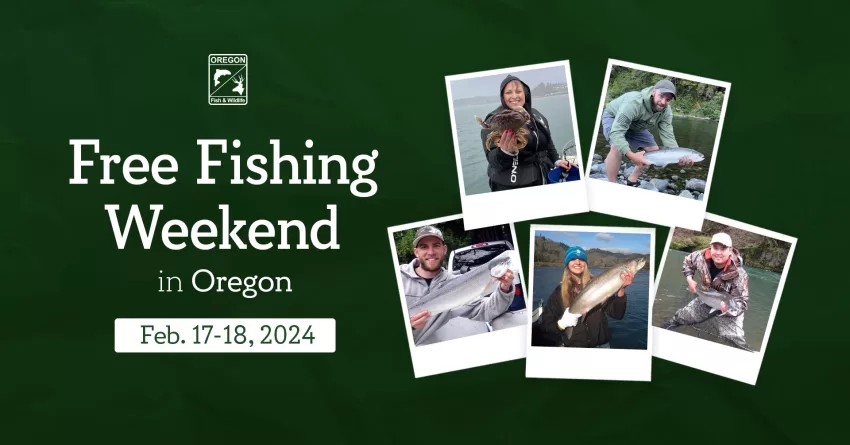SALEM, Ore.—Make fishing part of your President’s Day weekend plans with friends and family. Everyone can fish, clam and crab for free in Oregon on Saturday and Sunday, Feb. 17-18, 2024.
No fishing/shellfish licenses or tags (including a Combined Angling Tag, Columbia River Basin Endorsement, Two-Rod Validation or Rogue-South Coast Steelhead Validation/Tag) are required those two days. Both Oregon residents and nonresidents can fish for free.
All other fishing regulations apply including closures, bag limits and size restrictions. See the Oregon Sport Fishing Regulations for rules and remember to check for any in season regulation changes, especially for salmon and steelhead fishing. (You can also find in-season changes in the Recreation Report Fishing Report, click zone where you want to fish and then click the “Regulation Updates” tab.)
The Recreation Report is updated weekly and features the best bests for fishing for the upcoming week. Depending on water levels and conditions, fishing could be good for winter steelhead; again be sure to check regulations first because not all rivers are open. Trout are also being stocked in the Willamette Valley and in the mid-coast area.
For beginners, Easy Angling Oregon is a great guide to getting started fishing in Oregon. If you live near Portland, Bend, Medford, Roseburg or in Lane County, there are lots of nearby options.
Prefer to crab or clam instead? MyODFW.com has all the information you need to get started clamming or crabbing. Remember to check ocean conditions and take safety precautions—always clam with a friend and never turn your back on the ocean. Also, don’t forget to mark your crab buoys.
Call the ODA Shellfish safety hotline at 1-800-448-2474 or check their Shellfish page before you go clamming or crabbing. The Oregon Department of Agriculture regularly tests shellfish and closes areas when naturally occurring biotoxins get to levels that make crabs and clams unsafe to eat.
Currently, crabbing is open along the entire Oregon coast. Razor clamming is closed from Cape Blanco to the California border for high levels of the marine biotoxin domoic acid.


